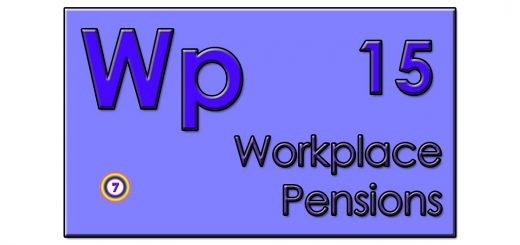Crowdfunding- Elements 30

This post is part of the Elements series, a Periodic Table of all the Investing Elements that you need to take control of your financial life. You can find the rest of the posts here.
Crowdfunding
What is it?
Crowdfunding – or to give it its full title, equity crowdfunding (( this is to distinguish it from crowd lending, as P2P was originally known, and from reward-based crowdfunding, as seen on sites like KickStarter and GoFundMe )) – is a way of investing in the equity of small, unlisted companies, mostly from the UK.
- You’re basically giving money to a startup, usually in the hope of outsize returns.
- But few of these businesses succeed.
It’s the internet version of Angel investing, with much lower minimum contributions.
- Many of the points made below apply also to Angel investing.
Crowdfunding is also related to investing in VCTS, but again with smaller, more early-stage companies and lower contribution limits.
- VCTs are also listed, which means that you can sell your shares (at a price, not necessarily a good one) if you need liquidity in an emergency.
With unlisted crowdfunding investments, you need to wait for an exit event (usually the company being bought by a larger firm) to get your money back.
- This can easily take five to seven years or more.
- There can also be dividends along the way, but under EIS rules these are not tax free (unlike dividends from VCTs) so they are not popular.
What kind of element is it?
Crowdfunding is a subdivision of the Equity asset class, but for our purposes today, it is an Inessential Element.
- That’s because it’s not essential for anyone to use crowdfunding.
Who needs it?
As with all the elements in the inessentials row, this is the crux of the matter.
- So obviously, the premise is that nobody needs it.
- Mostly because crowdfunding is high risk (see below).
Safer, more useful and more important places for your money include:
- repaying expensive debts, especially short-term debts
- building up an emergency fund (perhaps in a cash ISA)
- contributing to your workplace pension, which should attract matching contributions from your employer
- paying off some of your mortgage (if you are a homeowner)
- making contributions to a SIPP (particularly if you are a higher-rate taxpayer)
- using up your annual contribution limit to an ISA (stocks and shares, not cash)
Since the 2017/18 limits for pensions and ISAs are £40K and £20K respectively, this should take care of between £80K and £100K of salary for most people.
- This would be a remarkable savings rate of between 60% to 80%.
- Depending on how quickly you want to retire, you would usually be ok with saving between 15% and 20% of your income.
But the basic point is that crowdfunding should only be of interest to those with high salaries.
- I would go further, and say that high risk investments of all types should only be considered by people with moderate to large portfolios.
- Let’s say people who have bought a home to live in (via a mortgage), and also have £250K of savings.
We also need to look at the competition to crowdfunding, which in this space is VCTs / EIS / SEIS.
- Each of these schemes offers tax breaks for investment into small, unlisted companies.
Crowdfunding sometimes offers the same tax breaks, usually through the EIS scheme, and sometimes through SEIS (a turbo-charged EIS for even smaller companies).
VCTs and EIS are cumbersome and initially time consuming.
- The application process still involves posting paper forms via intermediaries, and hasn’t moved on since the 1980s.
- Often you then receive paper share certificates in return (but at least in the case of VCTs, which are listed, you can send these in to be added to a nominee broker account).
- They also usually have relatively high minimum contribution limits, of £3K to £10K, depending on the fund.
- But applying via a fund (all VCTs are funds, EIS can be either) usually offers diversification benefits.
Crowdfunding has an even bigger admin overhead.
- Because of the lower contribution limits (sometimes as little as £10), there is a natural temptation to over diversify.
- But if you think filling in an application form for £5K is annoying, try making 500 applications for £10 each.
- Admittedly, the crowdfunding platforms make it look easy by letting you do it online.
And crowdfunding is on average riskier, especially in comparison to VCT, since the firms involved are smaller and more early-stage.
But there’s a bigger problem.
- High minimum contributions have the hidden benefit of keeping out the wrong people.
- Not the riff-raff exactly, but those people who don’t have enough money to accept the associated risks.
If you are the kind of person who likes the idea of risking £10 on an unknown startup with no revenues or profits, perhaps you would enjoy the unique atmosphere of the betting shop.
- Or you could buy a few lottery tickets.
Few people need VCTs and EIS, and nobody needs to invest in crowdfunding.
What comes before it?
Repaying debts, an emergency fund, your workplace pension, paying down your mortgage, SIPP contributions, ISA contributions.
What comes after it?
Only the most esoteric stuff, some of which is also Inessential:
- Hedge Funds, Gold, Commodities, FX trading, Spread Bets, SWAG, Options and Warrants.
What age do you need it from?
It’s an Inessential, so strictly, never.
As a high-risk subdivision of equities, you’re unlikely to have a big enough net worth for crowdfunding to be appropriate until your late thirties.
What age do you need it until?
If you do get into this stuff, you could treat it like equities, and keep it until you decide to switch from your own retirement portfolio into a monthly annuity payment.
- Given current interest rates and longevity projections, this is unlikely to be before the age of 75.
- Or alternatively, when you have failing mental faculties.
How much does it cost?
Costs are usually higher than even expensive active equity funds, but less than hedge funds.
- There will be an initial fee of 1% to 2%, and an annual fee of 1% to 2%.
- There could also be a performance fee, say 10% above some return hurdle.
What’s in it?
Crowdfunding is just a way into unlisted equities.
- You have a share in the ownership of a company, and hence the right to a share of its future earnings.
What does a good one look like?
There’s more detail on this below, under risks, but you want to avoid high valuations and the possibility of future dilution.
What does a bad one look like?
The opposite of a good one – expensive to begin with and no pre-emption rights (see below).
Any recommended brands?
There are no brands of crowd-funded firms themselves, but leading platforms include Seedrs, Syndicate Room, Crowdcube and Angels Den.
They are all FCA regulated, though this doesn’t mean that much in this space.
- There will be some rules on how the businesses who want to raise money are analysed, but you won’t get your money back if the businesses you invest in fail.
And in many cases, you will need to self-declare as a sophisticated or high net-worth investor.
- Which is effectively the same as opting out of the government’s compensation scheme.
Crowdcube allows you to self-declare that you won’t put more than 10% of your assets into crowdfunding, and you can then proceed as an “everyday investor”.
What are the main risks?
The key risk is investment risk – that the company does not perform, or worse than that, fails entirely.
These are early days for equity crowdfunding in the UK, but 2016 figures from AltFi and Nabarro suggested that 20% of firms raising crowdfunding money between 2011 and 2013 had already failed.
- The study looked at 367 firms who raised £18M between them (an average of £50K each).
- We covered the survey in more detail here.
The survey found that only 22% of the firms had managed to raise further funds at a higher valuation (or had actually returned cash to investors).
- The return over the average holding period of four years was just 2.17%.
Separately, Seedrs has said that its 253 businesses had a failure rate of around 40% (from 2012 to 2015).
- It also claimed a 14.4% return (IRR), or 41.8% after tax breaks are included.
- Interestingly, diversified investors with more than 20 investments only bumped the IRR up to 15%.
- Note that this is paper money, not cash exits.
A second risk is valuation risk – because most crowdfunding investors are unsophisticated (even if they self-declare as the opposite), valuations can be on the optimistic side.
- In Angel and VCT investing, professional investors are more likely to keep valuations to a realistic level.
A third risk is dilution – if you invest in a firm which later issues new shares to raise more money, your share of the company will go down.
- You have been diluted.
The final risk is illiquidity – this is not really a risk, it’s a fact of life.
- As stated above, it’s hard to get your money out of crowdfunding.
- Companies are not listed and there’s no secondary market.
- You’re basically waiting for an exit event.
How do you deal with these risks?
The number one tactic is diversification, both at the overall portfolio level and within any allocation to early-stage equity.
- While the AltFi numbers appear worrying on the surface, with sufficient diversification they might not be a problem.
- The general rule in this type of investing is that one big winner out of every ten investments will pay for four or five losers and four or five firms that just break even.
Investors should be looking to invest in 20 to 30 companies to spread the risks.
- The easiest way to do this is through funds, which exist in the VCT and EIS space, but rarely in the crowdfunding space.
In addition, crowdfunding – along with VCT and EIS – should make up no more than 5% of your overall portfolio.
You can also choose lower-risk businesses, perhaps those that have real assets like property, or are further advanced in their life cycle (have sales, or even profits).
- Note that the projected returns for such businesses will be lower than for blue-sky firms.
To avoid dilution, you need to keep investing in any subsequent fundraising cycles.
- Pre-emption rights give the legal right to do this – without these the company can find new cash from new investors.
- Pre-emption rights are offered by Syndicate Room and Seedrs, but not Crowdcube.
To avoid valuation risk, simply don’t invest in companies with absurdly high valuations.
- You could also choose a crowdfunding platform that is investor-led (like Syndicate Room, where lead investors negotiate more favourable terms with companies), rather than one that is company led (eg. CrowdCube or Seedrs).
There’s nothing you can do about illiquidity.
















